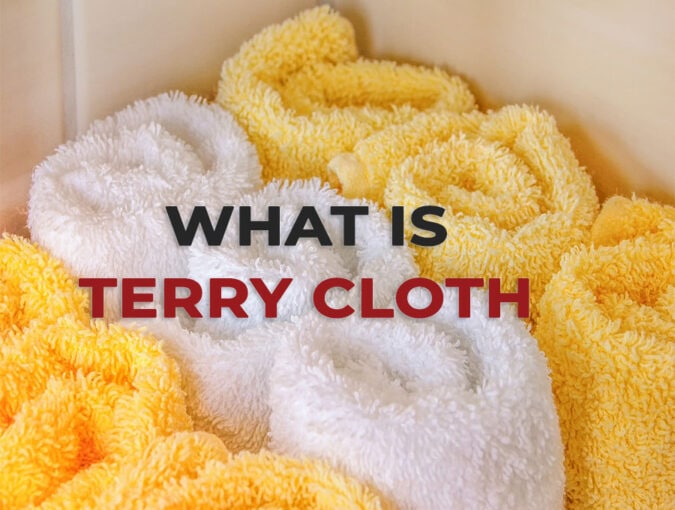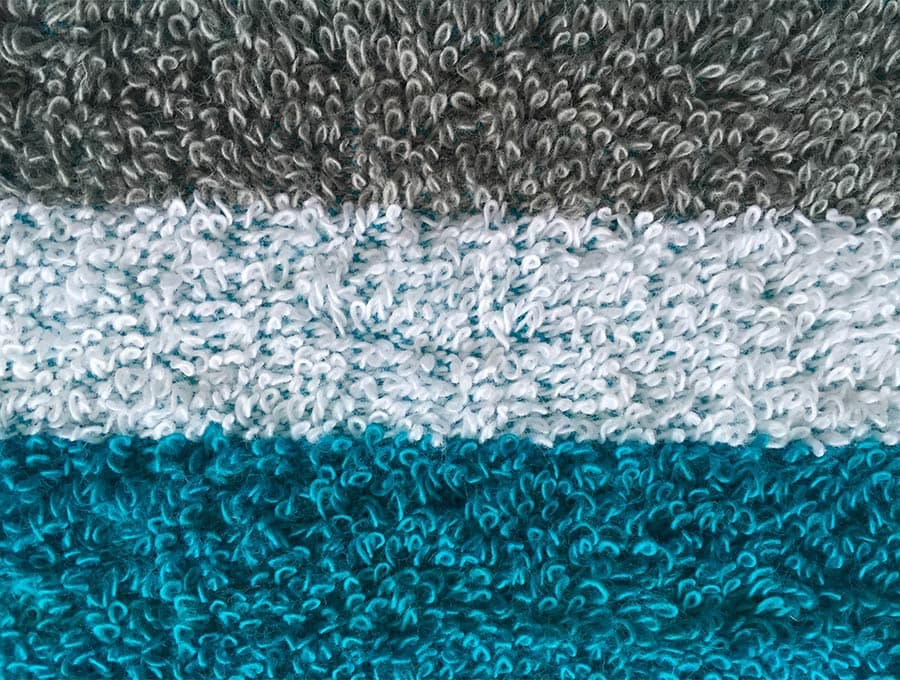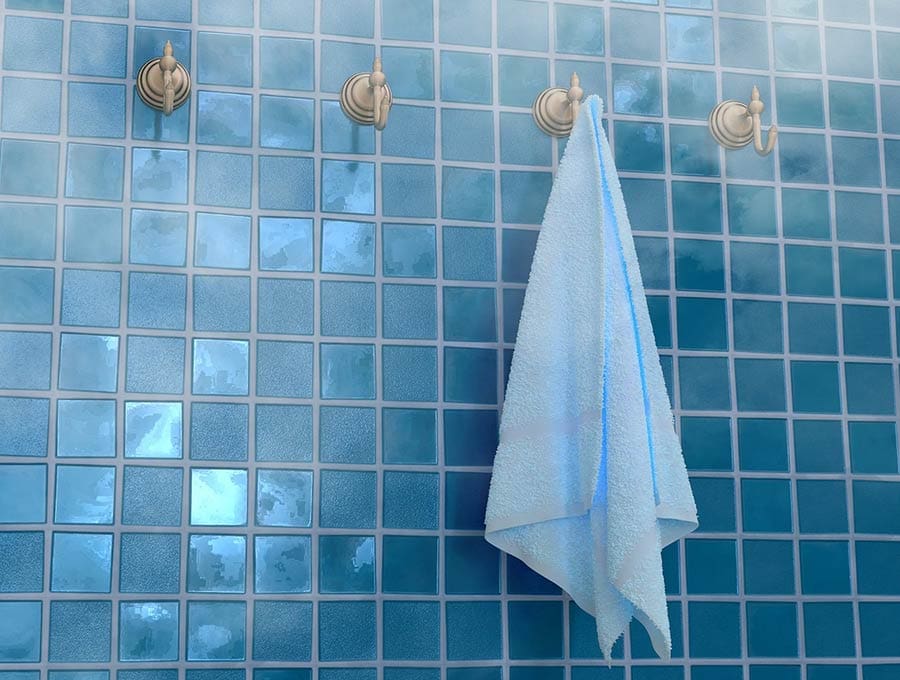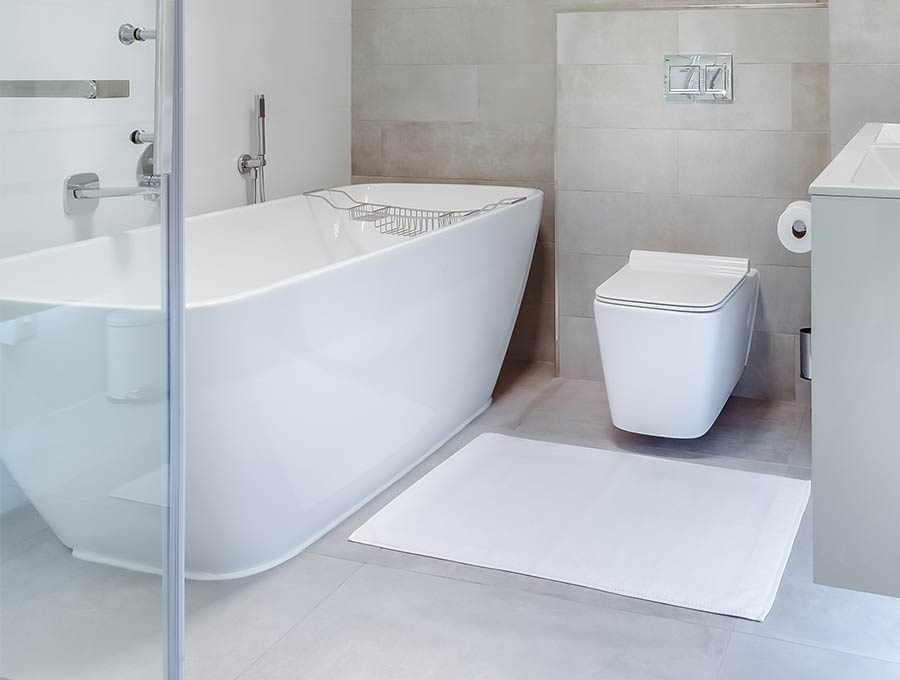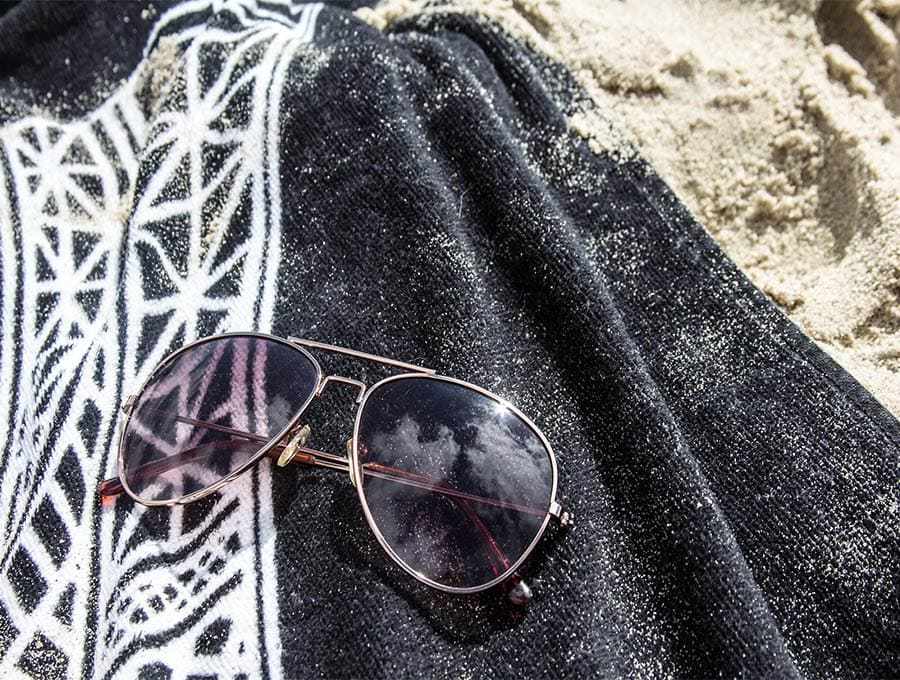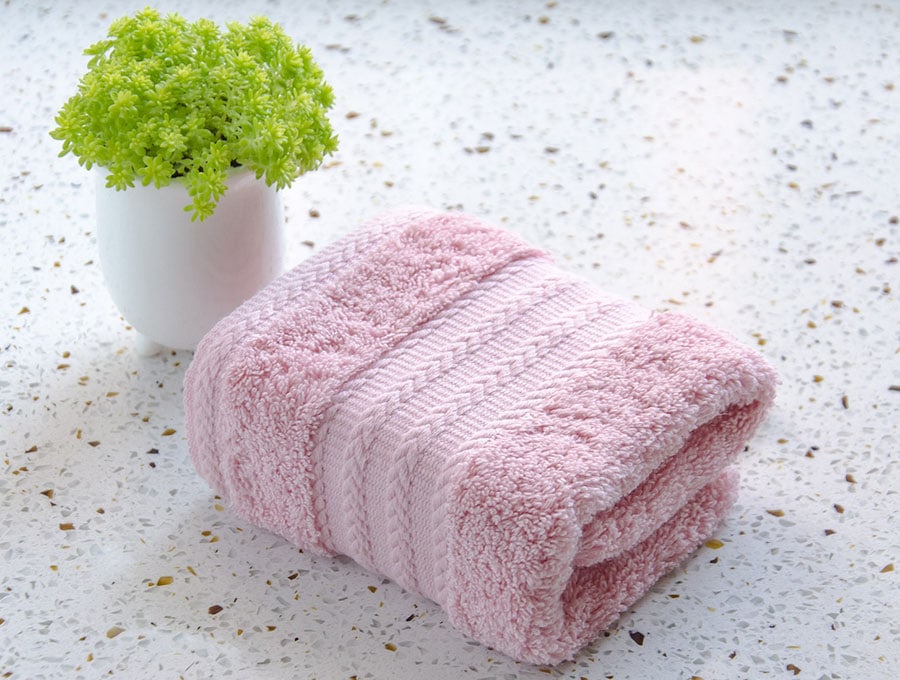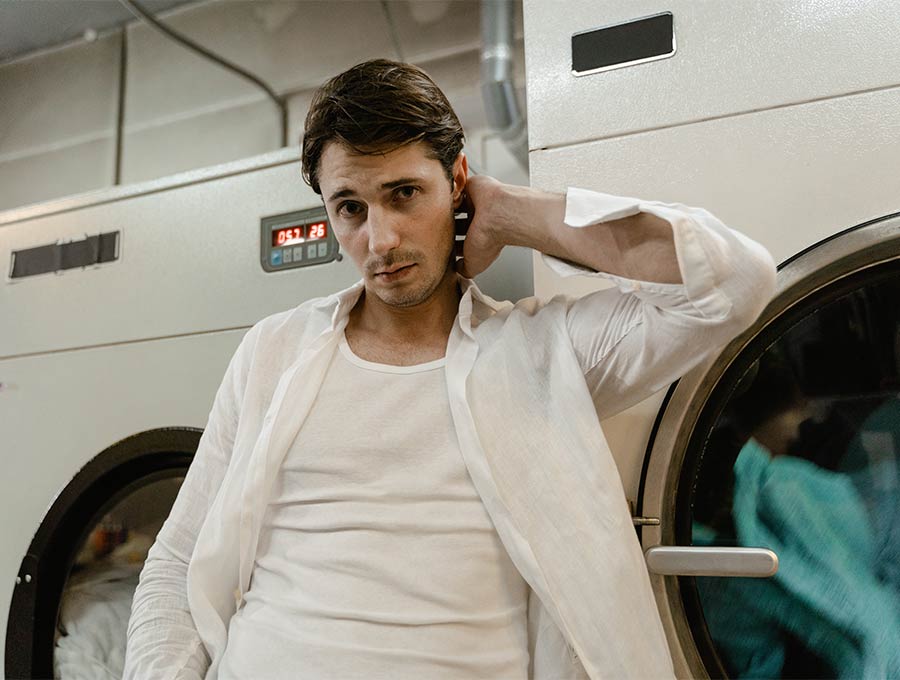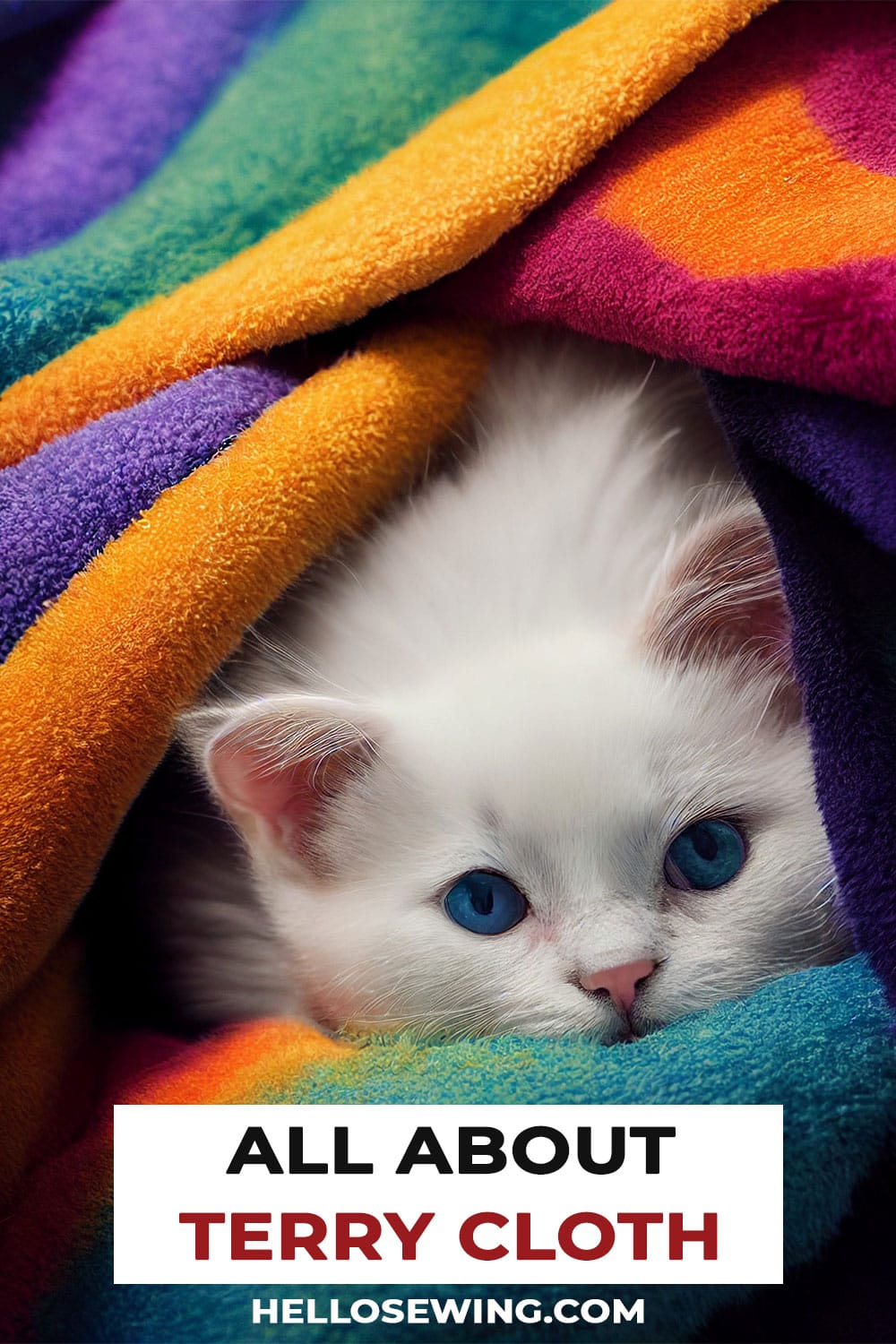What is Terry Cloth? All about Terrycloth Fabric, Uses and Types
Table of Contents
What is Terry cloth?
We are so used to seeing terrycloth around us in everyday home décor items, from towels to bathrobes, upholstery material to cleaning cloths, yet very few people know exactly where it originated and how the perennially popular terry cloth is made.
Terrycloth is a thick and absorbent fabric typically made from cotton, but it may also be composed of various other materials, such as silk, linen or polyester. Often a blend of various fabrics is used. Cotton terry cloth is known for its ability to absorb moisture, which is why it is so popular for thick and thirsty type towels, or those luxurious bathrobes you wrap yourself in at day spas.
Who invented terry cloth?
The fabric was initially invented in France in the 19th century by a French weaver named Joseph-Marie Jacquard, who is well known for creating a fabric that bears his name – Jacquard. As a young boy employed to work in a weaving mill, he soon decided that the heavy and rather dangerous work of lifting weighty reels onto looms wasn’t for him and worked on inventing punch cards that guided the loom rather than the backbreaking work of children under ten years of age lifting the reels when asked to by the master weaver. Jacquard fabric has the pattern woven into the fabric instead of being printed on later. However, terry cloth is different because although it was also invented by Jacquard, it gets its name from ’tisser”, which means ‘to twist’ or ‘to weave’ in French. That got changed to ‘terry’ as words from other languages are often twisted (no pun intended) in translation.
Terry cloth is made with uncut loops and differs from other fabrics. The loops are known as the pile. It stands up from the base weave of the fabric. Now, most fabrics are made by weaving a warp (the vertical threads) and a weft ( the horizontal threads) together. On the other hand, terry cloth is made using TWO warp threads: the ground warp, which forms the base of the towel, and the loops of yarn that create the pile. These loops on either side of the fabric increase the surface area that comes in contact with the skin, as with towels or bathrobes, providing more absorbency. Of course, they have the soft and luxurious feel we crave in items that touch our skin. No one wants to dry themselves off with a bath towel that feels like a piece of cardboard. That’s why the more cotton in a towel and the deeper the pile, the more expensive the towel will be and more desirable due to the sheer luxury of the feel of it.
What is terry cloth used for?
Terrycloth is popular for a wide range of uses due to its softness and absorbency. It’s most commonly used to make bath towels, robes, clothing, cleaning cloths and other household linens. It can also be used to make upholstery, blankets and mattress protectors. There are two main types of terrycloth: looped terrycloth and cut pile terrycloth. Looped terrycloth has loops on both sides, creating an even finish on both sides of the fabric; this terrycloth is often used for bath towels and robes because it’s soft and absorbent. Cut pile terrycloth has fibers cut at regular intervals to create an uneven surface; this type of terrycloth is often used for upholstery because it wears better over time than looped terrycloth.
Terrycloth is primarily used for household items because it is durable and absorbs moisture. The natural cotton fibers make it particularly good at soaking up excess water after a shower or bath without becoming overly heavy or damp. This makes it ideal for towels, facecloths and washcloths. Terry cloth can also be used for making clothing items like shorts, skirts, jackets and pants; its cotton fibers make the fabric breathable, which makes it perfect for summer wear. Imagine slipping on a terrycloth dress in a bright print after going for a swim – you’ll soon be dry and feel comfortable without having to rush off to change. Terry cloth is also used for change towels – those big hooded rectangular capes that enable you to change from your swimwear into your clothes in public without any embarrassment as you are fully covered as you change. These are enormously useful when you are at a beach that has no changing rooms.
Terry towelling can is easily dyed or printed to provide a full range of color options. It can also be woven with a jacquard weave, so portions of the fabric stand higher than the base layer, creating intricate patterns. Terry cloth can also be decoratively embroidered. It can be done professionally by a company offering embroidery services. If you have an embroidery machine at home, you can embroider names on items or create an elegant border for towels or face cloths.
Some moms have their kids’ towels embroidered so they don’t fight with their siblings about who the bath towel belongs to at home. It also helps moms figure out which kid did not hang up their towel but left it in a heap on the floor! If it’s a swim towel, it can readily be identified when left at a friend’s house where the kids went swimming. No self-respecting kid will use a towel with another kid’s name emblazoned across it.
Types of terry cloth
Long loop terrycloth
Long loop terrycloth is often used for bathmats as it has extra absorbency and thicker threads, so your feet sink into the pile. All the drips are absorbed instead of making the bathroom floor a slipping hazard.
Terry Velour
Terry velour is often used for beach towels, as on one side, it feels and gleams like velvet as the pile is short and not looped. On the other side, the fabric has the standard terry cloth loops. Always dry yourself with the terry pile side, which is more absorbent than the velour side. The velour side looks impressive, so wear the velour side out if you are wrapping yourself in the beach towel or sun tanning on it.
Low-twist terry towels
Spinning yarn involves twisting the fiber to make it strong and uniform. The higher the twist in the thread, the stronger and more durable. With low-twist items made from terry cloth, the yarn used is from cotton fibres that are long staple, so they are by nature strong and durable. They don’t need twisting to add to their quality. Twisting them to a minimum means there is more air space within the fiber of the yarn, which makes it softer and more able to trap air – this makes it more luxurious and warmer.
Zero Twist
A zero-twist terry cloth item means there is no twisting of the yarn in the spinning process so that it can be woven into a super light and fluffy item. Garments and home wear made from a zero twist yarn means they have a luxurious touch. After drying yourself off with a zero-twist towel or laundering one, it dries faster than the regular twisted terry cloth.
How to sew with terrycloth?
When sewing with terry cloth, use a medium-weight thread, so your stitches don’t show through the thick fabric fibers. One way to ensure that your stitches stay secure is to backstitch every few inches when sewing seams closed; this will help keep your seams intact over time, even with frequent washings. You should also use a size 14 or 16 needle when sewing with terry cloth since the thick fabric requires a stronger needle to pierce through the layers of material.
What can I make with terry cloth fabric?
Due to its absorbent nature, terrycloth fabric is often used for:
- towels
- washcloths
- robes (check out these free robes patterns)
- slippers (check out these slippers patterns)
Here are some quick and easy gift ideas using towels:
- soap saver pouches
- hair towel wraps
- hooded baby towels
- travel kit out of washcloth
- beach towel cover up (super easy!)
- bath mats
- kitchen towel scarf or kitchen boa
- stay put kitchen towels – great hostess gift
Tips for laundering terry cloth garments
- When laundering items made from terry cloth, you should turn them inside out before washing to protect the outside surface from potential fading caused by cleaning agents or hot water temperatures.
- Avoid using fabric softener on terry cloth garments. Too much softener can decrease absorbency over time due to a build-up on the fibers.
- Remember not to put your terrycloth items together with items with hooks or zippers on them – like bras, skirts or trousers as these can get tangled in the terry cloth loops and rip them. We all know how the terrycloth on towels can ‘pull’, resulting in little strings dangling from the towel, which must be trimmed off to keep the towels looking good.
- Terry cloth pile is fluffed out when placed in the tumble drier rather than when hung on the line, resulting in a softer item you just can’t wait to snuggle into.
Overall, there are many different ways that you can utilize terrycloth. When cared for correctly, items made out of terry cloth which is a versatile material with many uses, will look good for years and still be comfortable to use. Subscribe to have future projects using terry cloth delivered straight to your inbox. If you enjoyed learning all about terry cloth, please share this article with fellow sewists.
Like this? Pin it:

